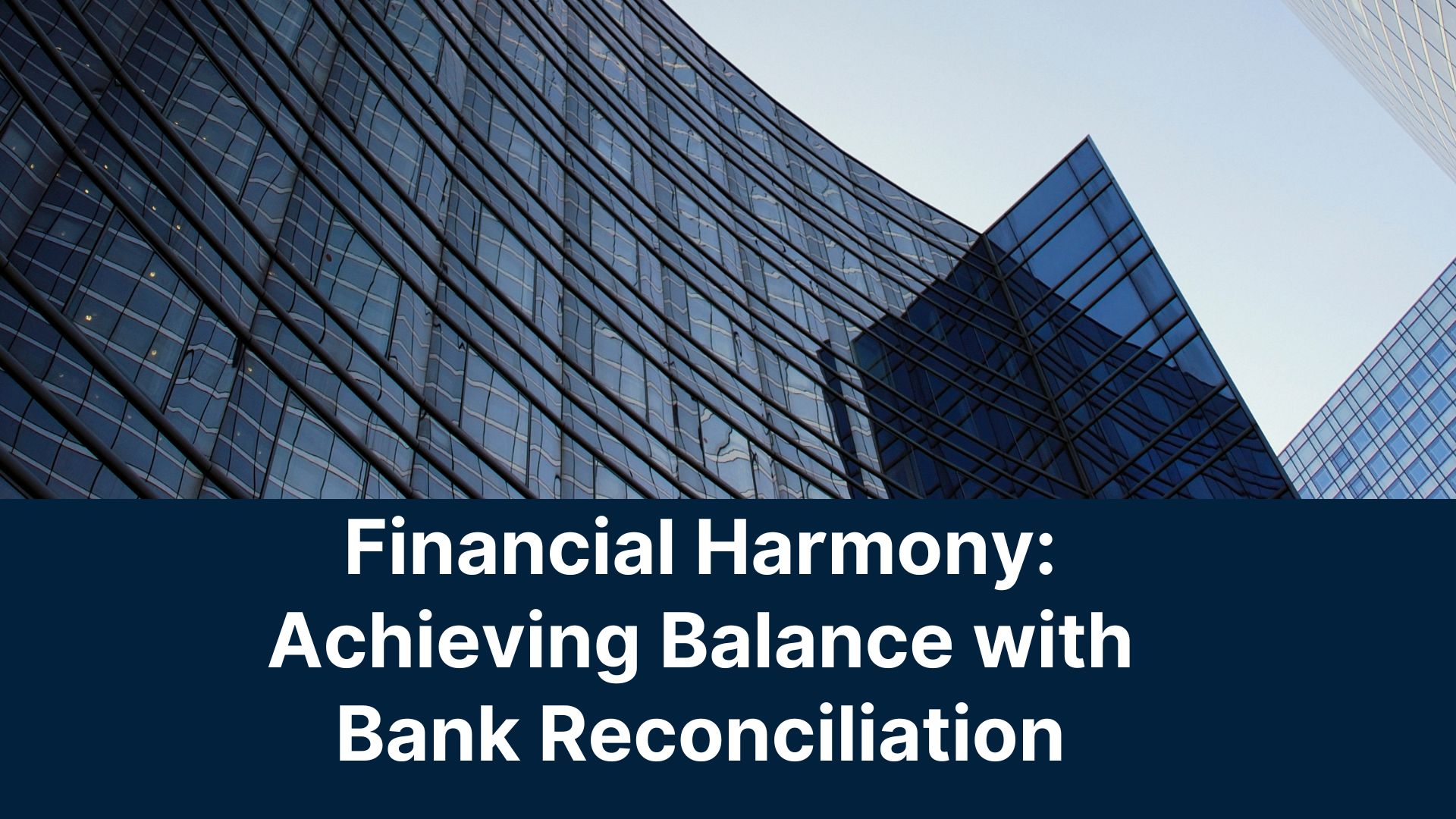Introduction:
In the intricate symphony of financial management, one crucial note often overlooked is bank reconciliation. It serves as the conductor that harmonizes your financial records with your bank statements, ensuring a seamless blend of accuracy and clarity. Achieving financial harmony through bank reconciliation is not merely a routine task; it is a strategic maneuver that empowers businesses and individuals alike to navigate the complex financial landscape with confidence and precision.
The Orchestra of Financial Transactions:
Imagine your financial transactions as the diverse instruments of an orchestra. From the sweet melody of income to the rhythmic beats of expenses, each transaction plays a unique role in the composition of your financial score. Bank reconciliation acts as the conductor, ensuring that every note is in sync between your accounting records and the bank statement.
The Complexity of Financial Disharmony:
Without a diligent reconciliation process, financial disharmony can quickly ensue. Discrepancies between your records and the bank statement may lead to confusion, errors, and a lack of transparency. These discordant notes can result in misguided financial decisions, late fees, or even damage to your credit score. Financial stability hinges on the ability to rectify these discrepancies and restore harmony.
The Bank Reconciliation Score:
Bank reconciliation is the sheet music that guides the financial orchestra, providing a comprehensive overview of your financial performance. The process involves comparing your internal records with the bank statement, identifying any disparities, and making necessary adjustments. This meticulous scorekeeping not only ensures accuracy but also serves as a powerful tool for detecting fraudulent activities and maintaining financial integrity.
Tools of the Trade: Technology and Bank Reconciliation:
In the modern era, technology has revolutionized the bank reconciliation process. Automated tools and software streamline the reconciliation journey, reducing the margin for error and saving valuable time. Embracing these technological advances empowers individuals and businesses to achieve financial harmony more efficiently, leaving room for strategic planning and decision-making.
Steps to Financial Harmony:
Achieving financial harmony through bank reconciliation involves a systematic approach. Begin by gathering all relevant financial documents, including bank statements, receipts, and invoices. Compare each transaction, noting any discrepancies. Reconcile the differences by adjusting your records accordingly. Regularly perform this process to maintain a continuous state of financial equilibrium.
Benefits of Financial Harmony:
The advantages of maintaining financial harmony through bank reconciliation are manifold. Accurate financial records instill confidence among stakeholders, enhance decision-making, and contribute to the overall financial health of an entity. Moreover, a well-balanced financial standing facilitates strategic planning, investment opportunities, and sustainable growth.
Case Studies: Realizing Financial Harmony in Practice:
Explore real-world scenarios where diligent bank reconciliation practices have rescued businesses from financial disarray. Case studies illustrate how attention to detail, consistency, and the strategic use of technology have contributed to financial success and stability.
Proactive Measures: Preventing Financial Discord:
Beyond the reactive nature of bank reconciliation, proactive measures are instrumental in preventing financial discord. Implement robust internal controls, educate financial personnel, and establish clear financial policies. These preemptive steps fortify the foundation of your financial structure, reducing the likelihood of errors and ensuring a smoother reconciliation process.
Compliance and Regulation: The Legal Score Sheet:
Navigating the regulatory landscape is an integral part of financial harmony. Bank reconciliation serves as a compliance score sheet, ensuring that your financial practices adhere to industry standards and legal requirements. By regularly reconciling your accounts, you not only maintain financial accuracy but also demonstrate compliance to regulatory authorities, building trust with stakeholders and safeguarding your reputation.
Continuous Improvement: Fine-Tuning the Financial Symphony:
Financial harmony is not a one-time achievement but an ongoing process of refinement. Regularly evaluate your reconciliation procedures, seeking opportunities for improvement. Embrace feedback, stay informed about industry best practices, and adapt to changes in technology and regulations. By continually fine-tuning your financial symphony, you enhance your ability to navigate the ever-evolving financial landscape.
Note: Get GST Reconciliation in Tally Service Easily Through Tallykonnect.com
Conclusion:
In the grand symphony of financial management, achieving harmony requires a meticulous orchestration of transactions, records, and bank statements. Bank reconciliation emerges as the key conductor, guiding the financial orchestra towards accuracy, transparency, and sustainable growth. By embracing the process with diligence and leveraging technological tools, individuals and businesses can navigate the financial landscape with confidence, ensuring a melody of success and prosperity.

